Yesterday, March 1st, was the feast of St. David, Patron Saint of Wales, and I have been reflecting on the Welsh heritage of saints. There is an Island off the ‘top’ peninsular in Wales – the LLyn, or the LLeyn Peninsular – called Bardsey Island, reputed to be where 20,000 saints are buried. They are, in a sense, sons and daughters of St. David.
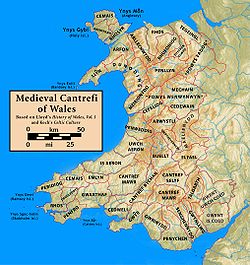 |
Map of Medieval Wales
A few years ago, with a friend of mine, Malcolm Pyman, we stayed at the Presbytery in Colwyn Bay, at that time in the care of the Oblates of Mary Immaculate. There was no resident priest, and we were welcome to stay there. It was a week that brings back memories of Malcolm, who sadly died about two years ago, at a relatively young age.
 |
Malcolm Pyman (third on the left) at the meal during the
Regeneration of the Parish Week, September 2004
We were good friends, and had similar interests; my main memory is of our visit to Bardsey Island, the Island of 20,000 saints and scholars. We then discovered that there is a medieval pilgrimage route, from the top of the peninsular to Bardsey Island, and this had several regular stopping points, all marked by a Church. The first was that of St. Beuno; the last was the monastery on the mainland, overlooking the Island, with the short span of sea between the two – a span of fast, furious and dark sea-currents. Many a pilgrim has been drowned in those dangerous straits, and, to this day, it is not advisable for the inexperienced to take a boat between the mainland and the Island.
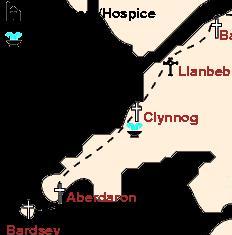 |
Pilgrim route down the Llyn Peninsular
Pilgrims who made that Pilgrimage twice, in medieval times, were told it was equivalent to a Pilgrimage to Rome! Maybe it was because of the dangers crossing those straits, that made it so meritorious, in doing the pilgrimage twice.
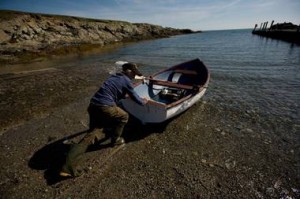 |
Older type of boat for crossing to the Island of Bardsea
Our boat was not much bigger than the one above, though ours had a motor, and we made a long detour, away from the straits, to the natural harbour on the East of the Island; we also got wet getting aboard, as it was necessary to wade out to the boat.
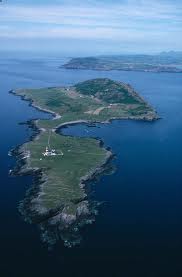 |
Bardsey Island with the mainland behind
In the picture, there is a view of the monastery, snuggling under the lee of the hill to the North of the picture. It is clear where the ruins of St. Mary’s Abbey are from the next picture.
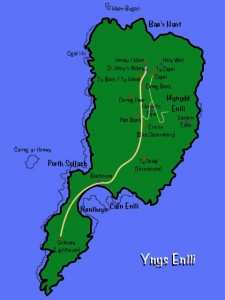 |
Top of the Island is the burial place near St. Mary’s Abbey of 20,000 saints.
It is Lent, and the desire to grow in love for God, and neighbour, should be uppermost in our hearts and minds. Lent is like a pilgrimage. Life needs stopping places, where one can re-charge the batteries. There are dangers on life’s journey, too, and we need perseverance in the face of adversity; we also need to ‘run away’ from evil, just as that small ferry ‘fled far’ from the dangerous currents of the straits.
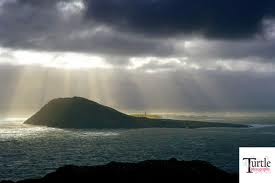 |
Bardsea Island from the mainland on a dark day
As in England, so in Wales, and it has come to my attention just how much the Christians – at least in North Wales – are struggling, as faith wanes, churches close and the Christian people are, once again, ‘on the back foot’. In Wales, there is a different feel to life, when compared with England: the culture, the language, the singing, the outlook on things is ‘something else’; it has its own perfection and beauty – a beauty that I, as an outsider, can look on, admire and appreciate. It will be interesting to discover how there will be growth, and development once again, of all that is Christian, in Wales. St. David, and all those medieval saints and scholars, will be mightily pleased when a true, and beautiful Christian spirit, flourishes once again Wales.
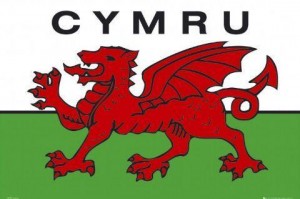 |
The Welsh Flag
To view and read the blog in its original formatting, readers are advised to visit the main blog site: www.stmarysblog.co.uk/main
